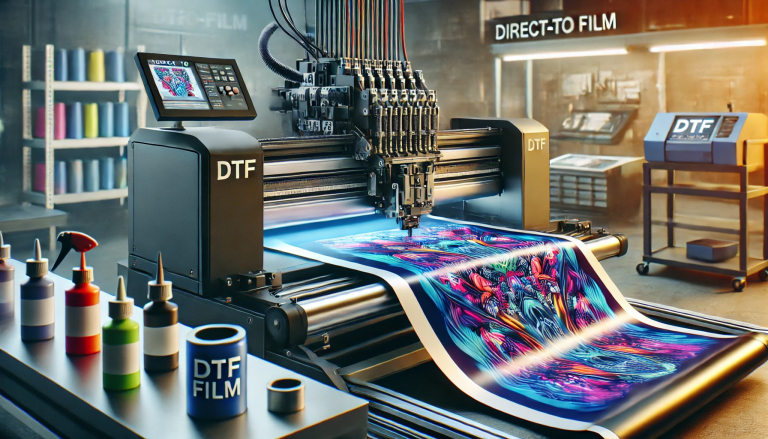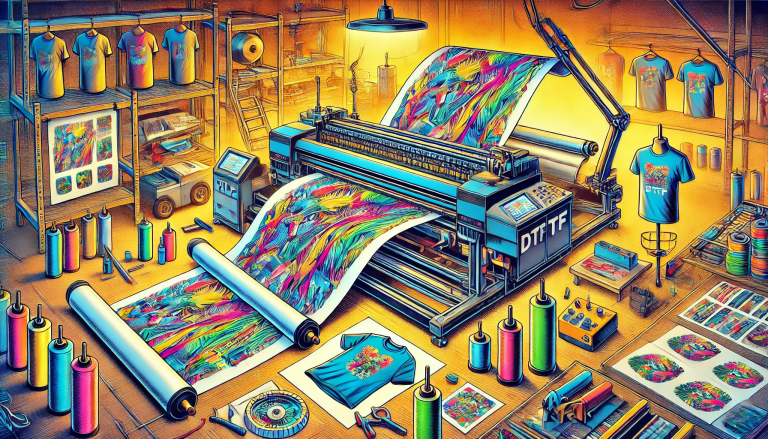“The Art and Science of DTF Transfers: A Step-by-Step Guide to Creation” -MAXDTF- DTF Transfer Film glossy Factory, DTF Transfer Film 13×19 Manufacturer, Made in China
I. Introduction
Direct To Film (DTF) printing is an innovative technique that has revolutionized the printing industry. Its versatility and ability to produce high-quality, durable prints on a wide range of materials make it an increasingly popular choice for both personal and commercial applications. The DTF process involves printing a design onto a specialized film, applying an adhesive powder, and then transferring the design to a substrate using heat and pressure. This essay aims to provide a detailed step-by-step guide on creating DTF transfers.
II. Understanding the Basics of DTF Printing
DTF printing leverages the advances in digital printing technology to deliver full-color, high-resolution designs that are soft to the touch and resistant to wear and tear. The key components involved in DTF printing are the DTF printer, DTF inks, transfer films, adhesive powder, and a heat press.
The DTF printer uses specialized DTF inks to print your desired design onto the transfer film. The design is then covered with an adhesive powder that bonds the ink to the film. Once the adhesive powder is cured, the transfer is ready to be applied to a substrate using a heat press. The heat activates the adhesive, causing the design to adhere to the substrate.
III. Design Preparation for DTF Printing
The creation of DTF transfers begins with preparing your design. The design can be anything you wish to print, such as a logo, a graphic, a photo, or a piece of artwork. This design must be digital and preferably in a high-resolution format such as PNG, TIFF, or EPS to ensure the best printing results.
Once your design is ready, you can use RIP software (Raster Image Processor) to prepare the design for printing. This software manages the color output and allows you to add a white under the base layer if required (necessary for printing on darker substrates).
IV. Printing and Preparing the DTF Transfer
With your design ready, load the transfer film into the DTF printer. Initiate the print using your RIP software, ensuring that the printer settings are correctly adjusted for the best quality print.
Once the design is printed onto the film, the next step is to apply the adhesive powder. This powder should be evenly spread over the design and any excess removed. The film is then heated, which cures the adhesive and prepares the transfer for application to the substrate.
V. Applying for the DTF Transfer
To apply for the transfer, position it onto your chosen substrate, ensuring the design is correctly oriented. The substrate and transfer are then placed into a heat press, which applies both heat and pressure.
The heat activates the adhesive, causing it to bond the design to the substrate. After the pressing time is complete (as recommended by the manufacturer), remove the substrate from the heat press and allow it to cool. Once cooled, carefully peel away the film, revealing your vibrant, high-quality design.
VI. Conclusion
Creating DTF transfers is a process that blends creativity and technical skill. By understanding each step, from design preparation to the final application, you can harness the potential of DTF printing to create unique, high-quality designs on a multitude of substrates. Whether you’re a hobbyist looking to personalize your items, a small business owner wanting to customize your products, or a commercial printer seeking to expand your services, mastering the creation of DTF transfers can open up a world of possibilities.
VII. Summary
DTF printing is a powerful technology that allows the creation of high-quality, durable prints on various substrates. This essay presented a comprehensive guide to creating DTF transfers, beginning with understanding the basics




